The mild climate of the Provence region, in southeast France, allows residents to enjoy outdoor living nearly all year round. Provence gardens are linked to the stone farmhouses, or
mas, that are central to the region. Other elements include lavender fields, terraced plantings, ancient stone walls and patios shaded by olive trees and wisteria. Some of these charming features can be adapted to gardens in other Mediterranean-like climates.
More garden styles around the world
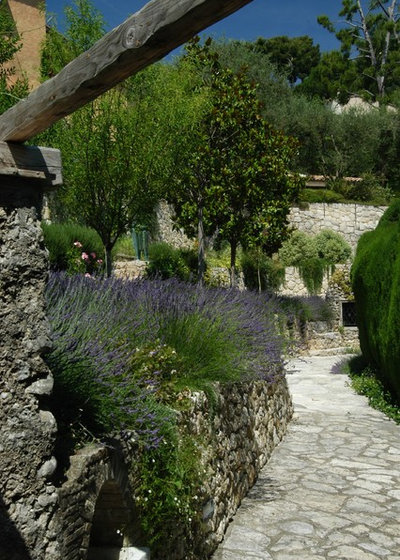
Atelier Nelumbo Garden Design
1. Terraces. Much of the land in Provence is sloped. To make the most of it, Provençal farmers built terraces, or
restanques, upon which to grow olive trees, grapevines and vegetables.
The terraces allow for the creation of flat planting surfaces. They are also an answer to the gullying effect of rain and irrigation waters. The height of each terrace will depend on the slope, as well as on the number of terraces desired.
This landscaping feature is still very much in use today and continues to protect against landslides and erosion.
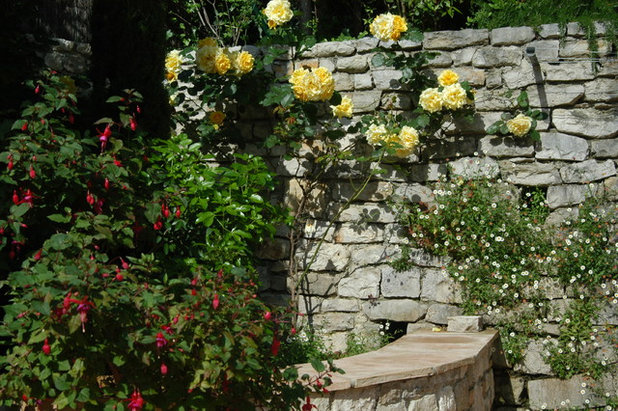
Atelier Nelumbo Garden Design
2. Dry-stone construction. The oldest terraces are supported by dry-stone walls, which reflect ancestral know-how and tradition. The basic method is still used in today’s gardens, but the walls are often strengthened by a binder, to increase long-term durability.
A plant-draped stone wall contributes to the balance and harmony of the garden, a mix of stone and vegetation.
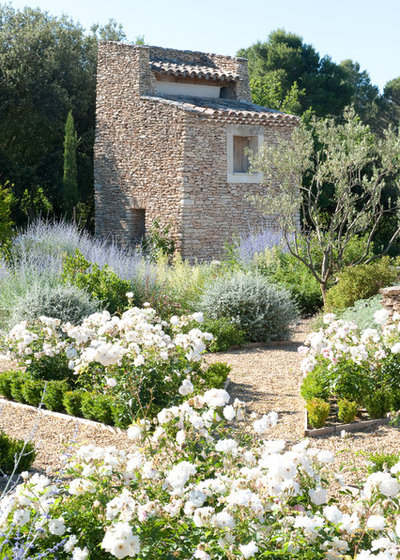
Thomas Gentilini
3. Old stones. These historically were the foundation of any construction in the Provence region. Today you can still easily find examples of this preserved heritage.
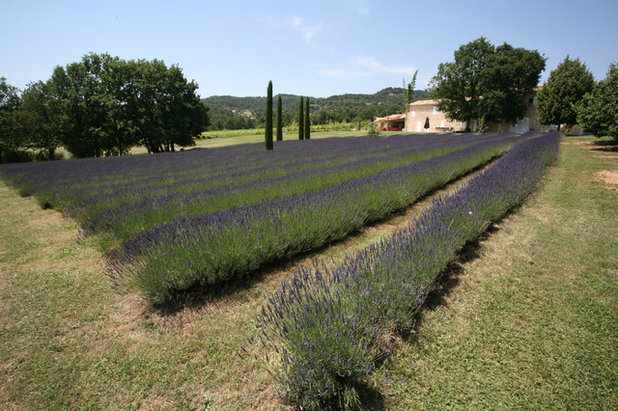
Thomas Gentilini
4. Vegetation. The Provence garden is distinguished by its vegetation: olive and cypress trees and aromatic plants, such as rosemary and lavender. The indigenous vegetation of the region maintains its foliage throughout the year. Drought-tolerant shrubs that do well in the region also include laurestine, Cistus, myrtle and strawberry trees. These natives are joined by propagated species, such as mulberry plane trees and cypress.
The Provence garden invites one to loll in the shade of a fig or olive tree while admiring the lavender fields or cypress trees.
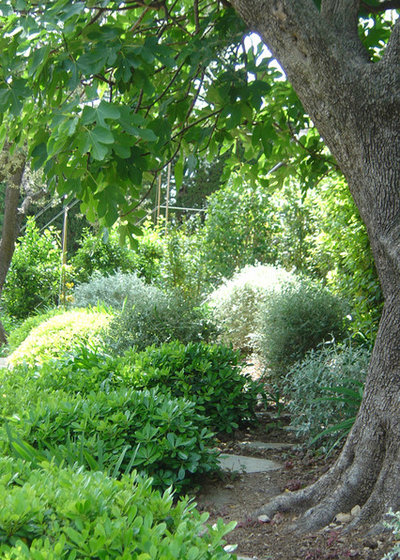
Atelier Nelumbo Garden Design
A Pittosporum,
Teucrium fruticans and fig tree offer a mix of greens here.
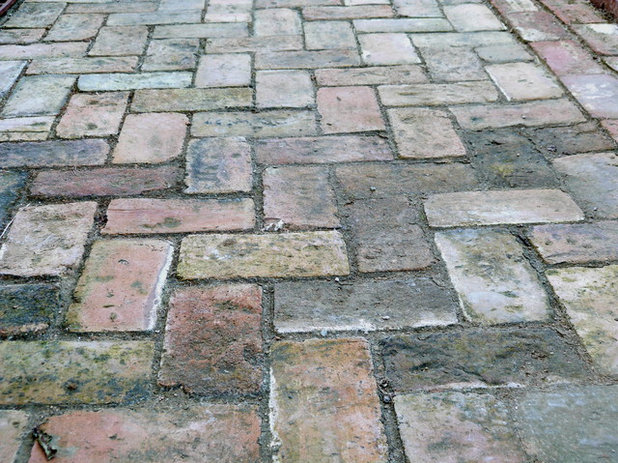
Landscapes & Cie
5. Terra-cotta tiles. Square or rectangular, on the floor or on the wall, terra-cotta tiles are an essential traditional material in the Provence region.
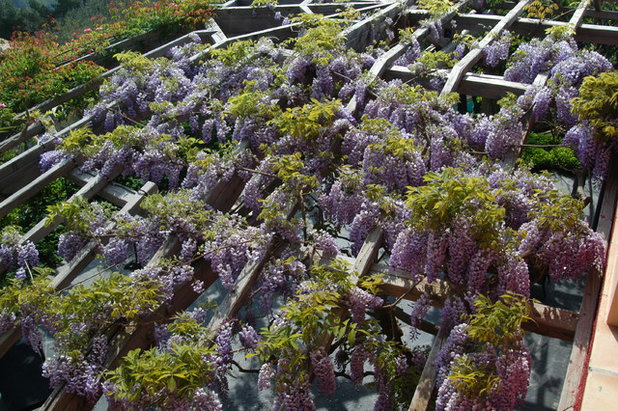
Atelier Nelumbo Garden Design
6. Pergolas. These arched frameworks covered with trained climbing or trailing plants are one of the most popular — and prettiest — ways to provide shelter from the sun. Pergolas often are located adjacent to the house. They also serve as a support for fast-growing vines, such as the wisteria seen here.
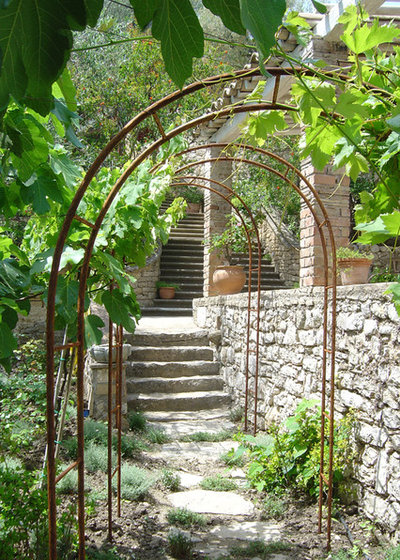
Atelier Nelumbo Garden Design
7. Arbors. This arched feature
complements a pathway or a passage and can support climbing vines, such as the grapevines seen here. A grand arbor in front of the house with plants like Tilia, Platanus or Celtis provides shade from the summer heat.
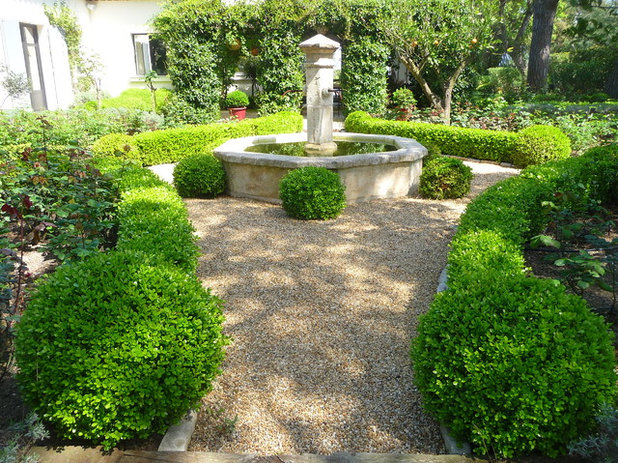
Atelier Nelumbo Garden Design
8. Fountains. Water is a precious element in the region, where droughts are frequent. Fountains appear in varying shapes and sizes as garden ornamentation and provide a refreshingly cool element in the dry climate.
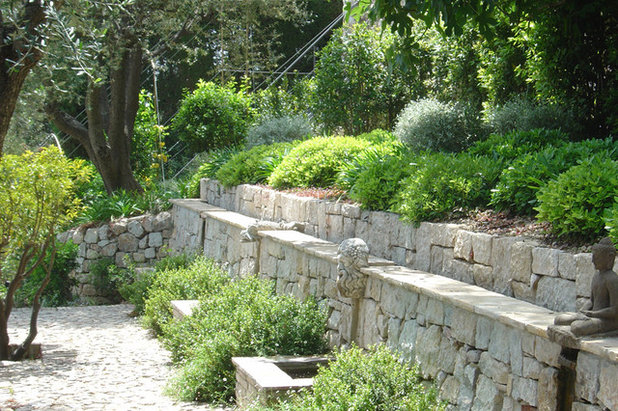
Atelier Nelumbo Garden Design
Stone walls create an opportunity to install a perfectly integrated fountain.
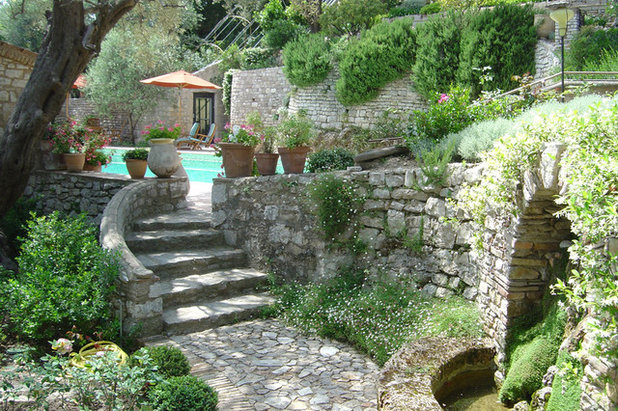
Atelier Nelumbo Garden Design
9.
Swimming pools. These offer recreation and relaxation and fit gracefully into the Provence landscape.
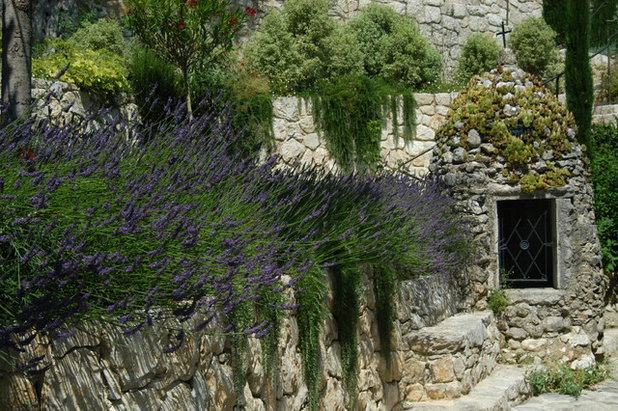
Atelier Nelumbo Garden Design
10. Stone wells. Once needed to satisfy the daily water needs of Provence inhabitants, wells today are rarely used in the region. But they stand as proud reminders of former times and traditions, and bring charm to the garden.
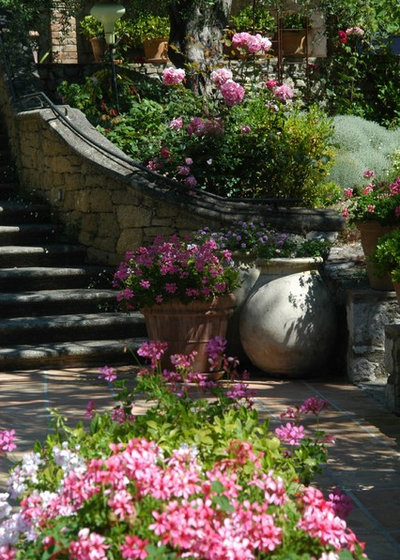
Atelier Nelumbo Garden Design
11. Pots and jars. These are found all over the garden but should be used sparingly to avoid visual clutter. Pots are
ideal for plants that do not do well during the winter. When the temperatures drop, they can be moved to a sheltered area.
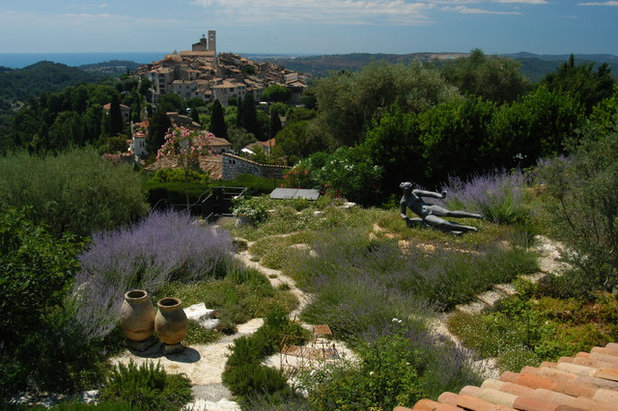
Atelier Nelumbo Garden Design
12. Little pathways. One frequently sees small trails while trekking in the Mediterranean hills. Integrated into the garden, meandering paths break up the strict alignment of rigid walkways.





